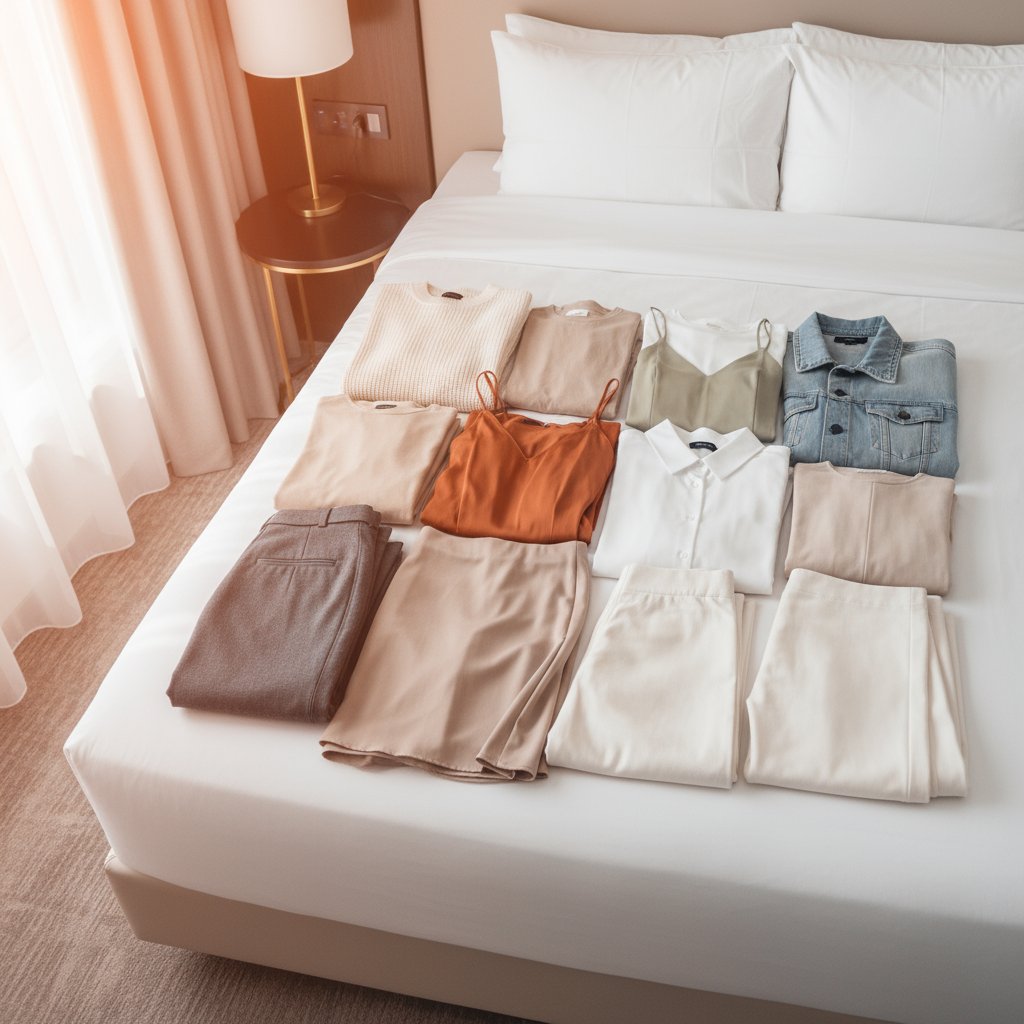The act of travel inherently involves impact—on the environment, local economies, and cultural landscapes. While we often focus on sustainable transportation or eco-friendly accommodations, the contents of our luggage, particularly our clothing choices, also play a significant role. Adopting a mindset of sustainable fashion packing and mindful shopping transforms your travel wardrobe from a source of potential waste into a tool for responsible, ethical exploration. This approach emphasizes quality over quantity, versatility, and supporting brands that prioritize ethical labor and environmental stewardship.
Sustainable fashion packing is fundamentally based on the “capsule wardrobe” concept. This method encourages selecting a limited number of highly versatile garments that can be mixed and matched to create numerous outfits. This reduces luggage weight, minimizes decision fatigue, and ensures that you have fewer items that are ultimately wasted. Furthermore, choosing materials that are durable, breathable, and quick-drying—such as Tencel, organic cotton, or recycled synthetics—extends the life of your clothing and reduces the need for frequent washing, saving both water and energy while on the road.
The Art of the Capsule Wardrobe: Pack Less, Experience More
The key to successful sustainable fashion packing is brutal selectivity. Every item must serve multiple purposes. A single, high-quality scarf can function as a shawl in a temple, a blanket on a cold flight, or a stylish accessory for dinner. Similarly, dark-colored pants made from a durable, wrinkle-resistant blend can transition seamlessly from a day of hiking to an evening meal.
Begin by setting a firm limit: perhaps ten clothing items (excluding underwear and socks) for a two-week trip. This forces you to choose garments that are compatible in terms of color palette and style. For instance, focusing on neutral bases (black, navy, grey) and introducing color through two or three versatile accessories or tops ensures everything coordinates. Importantly, this strategy directly combats the fast-fashion mentality by placing value on longevity. When you pack less, you buy less on impulse, and you reduce the overall ecological footprint of your travel wardrobe.
Choosing Sustainable Fabrics and Brands
The material composition of your clothing is central to sustainable fashion packing. Conventional cotton farming is notoriously water-intensive, and synthetic fabrics like polyester are derived from fossil fuels. Travelers committed to sustainability should seek out alternatives:
- Natural and Regenerative: Look for garments made from organic cotton (which uses significantly less water), linen (highly durable and requires few pesticides), or Tencel/Lyocell (derived from sustainably harvested wood pulp in a closed-loop system).
- Recycled Materials: For technical gear like rain jackets or hiking layers, choose items made from recycled polyester or nylon. This diverts plastic waste from landfills and oceans and requires less energy to produce than virgin materials.
- Mending and Repair: Before buying new, assess what you already own. Mending a tear or replacing a broken zipper is the most sustainable act of all.
When you do purchase new items for a trip, research the brand’s ethical credentials. Look for certifications related to fair labor practices and transparency in their supply chain.
Mindful Shopping: Supporting Local Economies Ethically
Shopping is an integral part of many travel experiences, but it should be a mindful, sustainable process. Instead of buying cheap, disposable souvenirs or fast-fashion items, focus on supporting local economies responsibly.
- Buy Local Crafts and Artisanship: Seek out items that are handmade and representative of the region’s culture, such as hand-woven textiles, pottery, or locally sourced jewelry. This puts money directly into the hands of local artisans, preserving traditional skills and providing equitable employment.
- The Second-Hand Experience: Exploring vintage or second-hand stores in a new city can be an exciting and sustainable way to find unique clothing. It reduces demand for new production and often results in a one-of-a-kind garment that tells a story.
- Ask About Origin: When shopping, politely inquire about the source of the materials and who made the item. This simple act encourages transparency from vendors and guides your purchase toward ethically produced goods. Avoid shopping in large, international chain stores which do not contribute meaningfully to the local economic fabric.
Care and Maintenance on the Road
Maintaining your sustainable wardrobe effectively while traveling further reduces your impact. Prioritize air-drying clothes whenever possible, as machine dryers consume immense energy. Use biodegradable soap flakes for hand-washing in your accommodation. Choosing dark, patterned fabrics can also help hide small stains, extending the time between washes.
Ultimately, sustainable fashion packing is a choice to travel lightly and ethically. By adopting this approach, your clothing becomes a subtle, positive statement about your commitment to the planet and the people you encounter.


